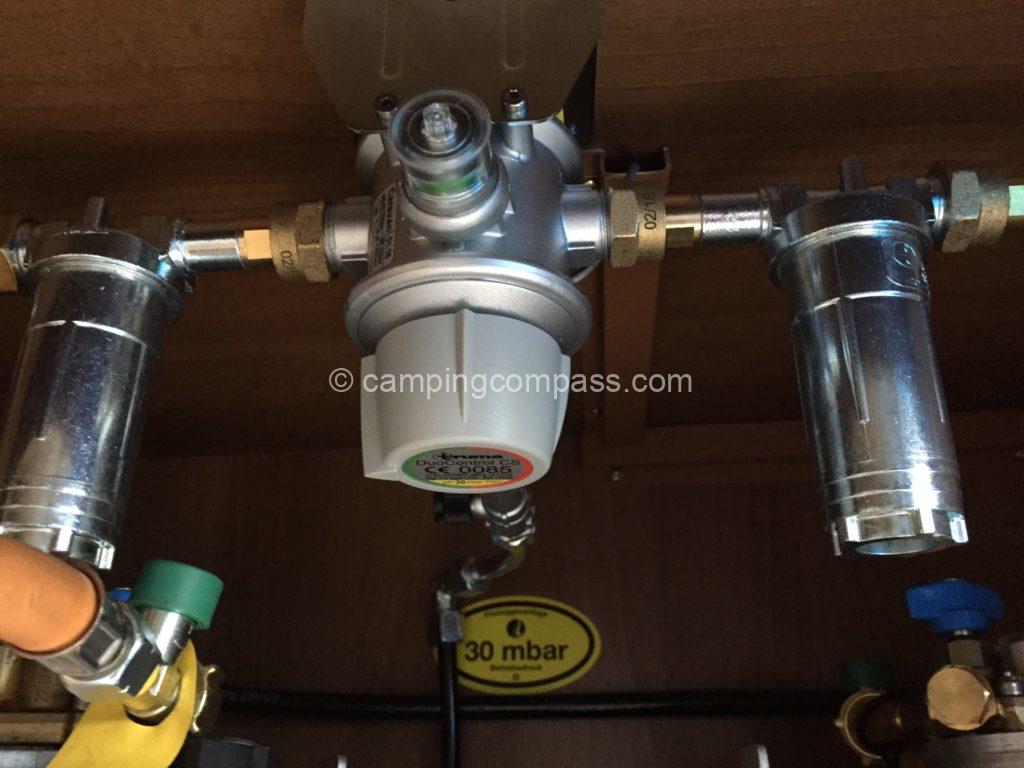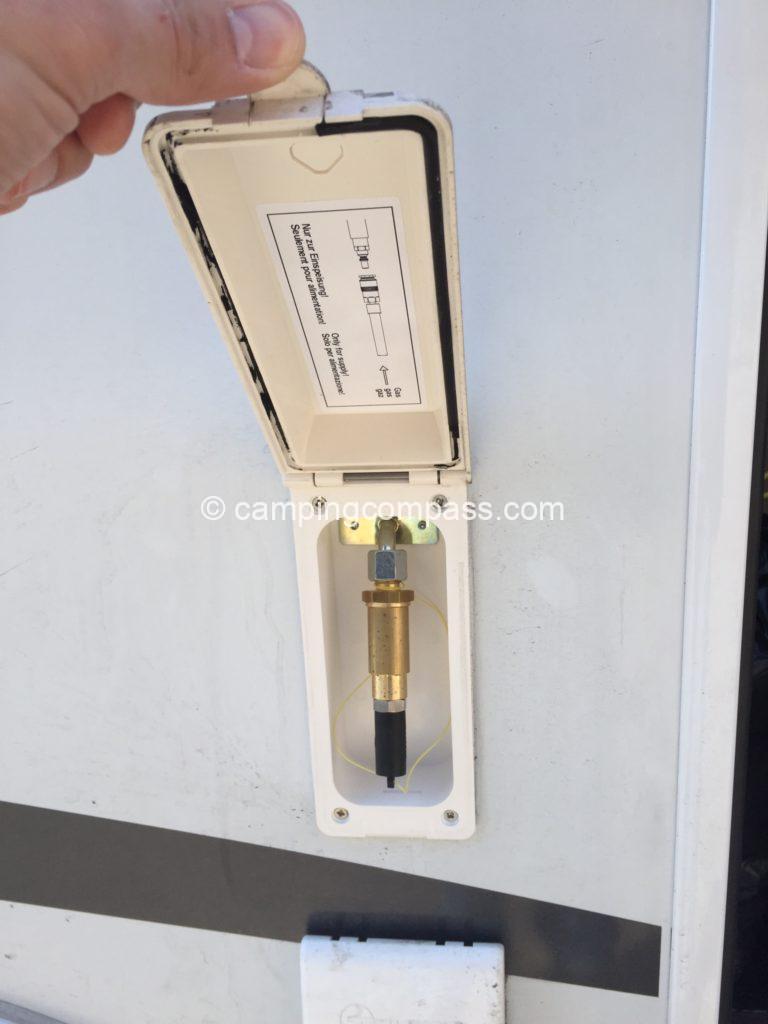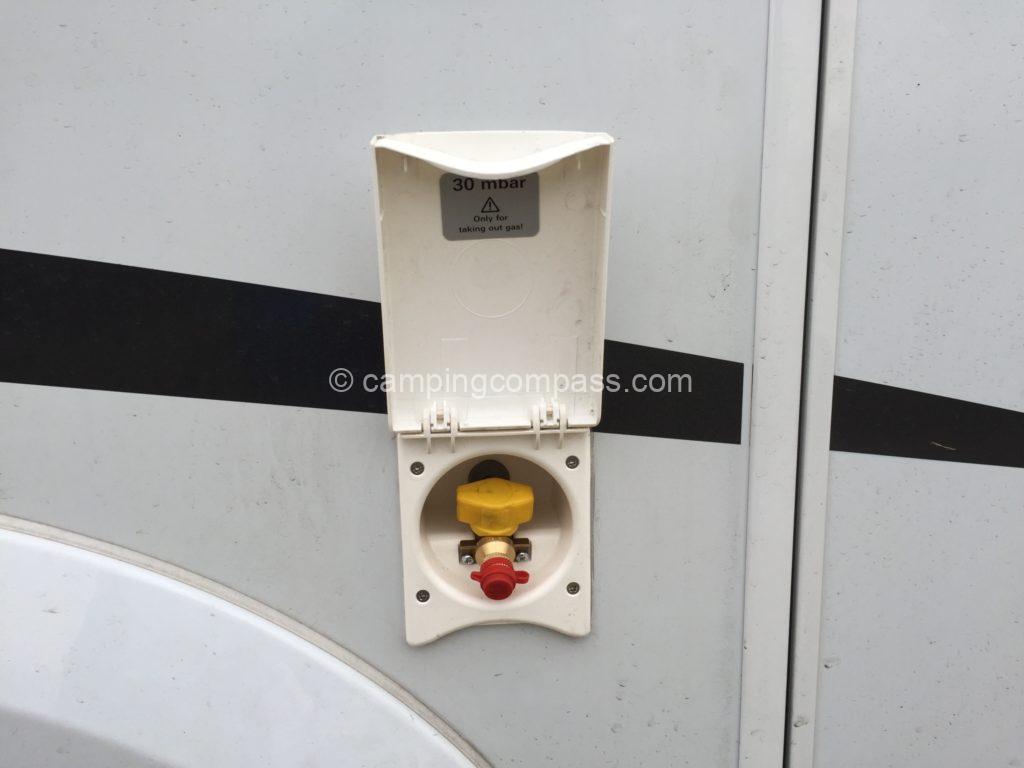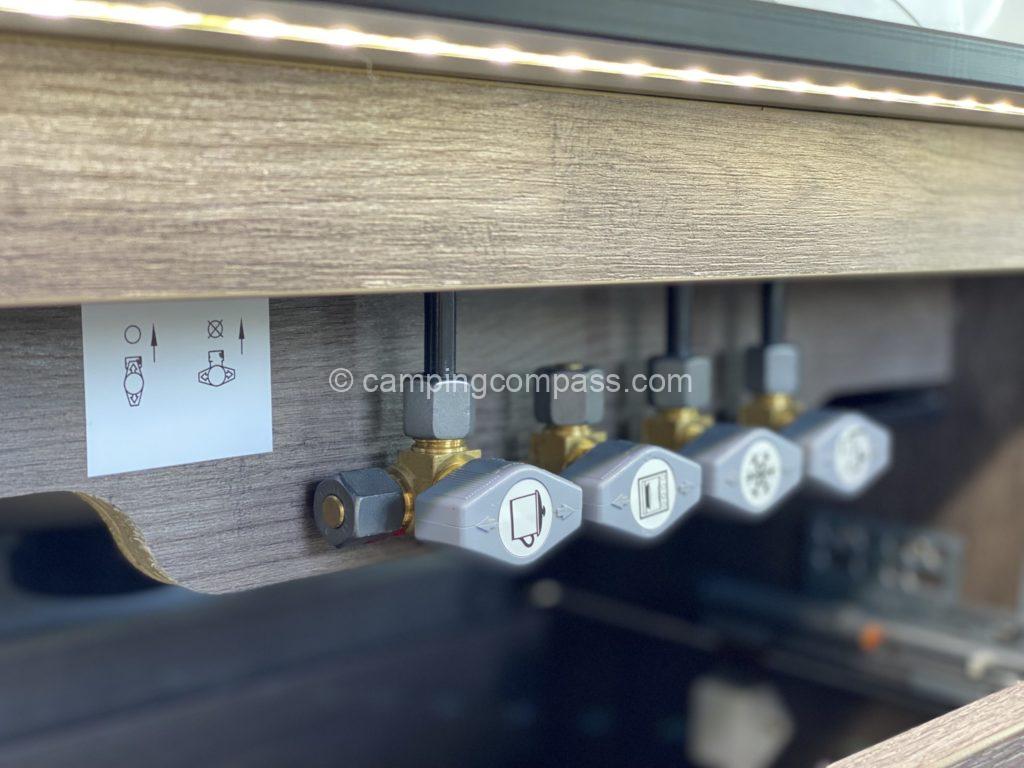Almost every motorhome gas system has a gas bottle. I saw one attempt at a motorhome with an induction cooker at a motorhome show once, but they never made it happen in real life. People use it for cooking, at the very least.
Gas in motorhome most often stored in 11kg cylinders in the motorhome. Mostly, the motorhome contains two cylinders, and they use gas for:
- cooking and baking
- heating water
- heating
- running the refrigerator
I write “mostly” on purpose because some motorhomes have an electric fridge or diesel heating. The utilization of gas in motorhomes is not only practical but also offers a degree of autonomy to travelers who may find themselves in remote or off-grid locations.
Main Gas switches
Unless you have safety features such as Duo Control (see below) installed in your motorhome, you need to shut off the gas before each journey. This is done by means of shut-off valves, most commonly with red or grey taps. A separate cap for each appliance

“You’ll find the gas cap in the kitchen area, probably in a cupboard or drawer”
Duo control, Crash Sensor and filters
I mentioned that motorhome usually has 2 cylinders. The cylinder is connected to the metal gas line via a gas regulator. If you run out of gas in one cylinder, you need to reinstall the regulator on the other cylinder.
It’s no big deal to climb out of bed at 4am in the winter and change the gas cylinder. The cylinders are usually accessible from outside the motorhome, or through the garage. I don’t need to explain any more.
Advantages of Duo Control in your motorhome
DuoControl allows you to connect both cylinders at the same time. If you run out of gas in one cylinder, DuoControl will automatically switch you to the other one. The new Truma DuoControl also includes a Crash Sensor. This enables safe operation of gas appliances even while driving. So you don’t have to shut off the gas before driving and can start cooking spaghetti and ketchup right away when you park.

To prevent any impurities from entering the gas line, gas filters are usually fitted together with the DuoControl. Especially if you have refillable gas cylinders.
Refillable gas cylinders in motorhome
Having read the previous lines properly, you probably wonder what to do if your gas in the motorhome runs out. A gas cylinder lasts a long time in the summer. Gas is basically only used for cooking, refrigeration and occasionally to heat water. In winter, however, it’s very different. The heating goes nonstop to prevent water from freezing in the tanks or pipes of the motorhome.
Problem with classic gas cylinders
If you run out of gas, you have to take out the cylinder, take it out and replace it with a full one. That’s like if your car ran out of gas, you had to dismantle the tank, take it out and replace it with a full one. They would never do that and people would rather ride a bike.

Pros of refillable gas cylinders
And that’s where refillable gas cylinders come into play. They look the same as conventional disposable cylinders, except they have a refuelling valve, allowing you to top up at any time at an ordinary LPG pump. Such miracle cylinders are produced by the German company Alugas and the English company Gaslow. Each refuelling cylinder has a manual indicator on it for the amount of gas remaining. This manual indicator can be exchanged for an electronic one, which can be easily exported inside the motorhome.
“Refuelling cylinders are the first thing you should fit to your new motorhome”
There is one other disadvantage to the classic motorhome gas cylinders. They can only be exchanged in the country they come from. Yes, if you go to Spain for a month, or the Alps for 2 weeks, you have nowhere to change the gas and you have to buy a local cylinder and a gas hose for the regulator that will fit on that cylinder of theirs.

Buy a refueling cylinder, fact. There’s a mobile app called MyLPG that shows you LPG pumps on a map. You can easily find a pump anywhere to fill up with gas. Refuelling is not a problem in Italy either. We have never been refused gas. The gas outlet is classically on the side of the motorhome, similar to LPG powered cars.
Motorhome external gas connection
Gas runs out pretty quickly in winter. Depending on the size of the motorhome and the outside temperature. Some campsites in the Alps, for example, allow you to rent local gas cylinders or connect the motorhome directly to their gas supply. So you can heat without any problems and you don’t have to worry about running out of gas.

We had that external gas connection in our old motorhome, but we never really used it. Why? We mostly go off campsites and even when we do go to a campsite, we’re never there for more than 2-3 days. After those three days, we filled up our gas bottles at the nearest LPG station.
Motorhome gas connection to the barbecue
You’ll use the external grill hookup quite often. It’s a quick-connect where you just plug in the gas hose, turn the tap and you’ve got the gas connected. It’s safe, fast and practical. You can plug in any gas stove or even a huge grill.

We had the hookup in our old Knaus motorhome and we have it now in Club Joker. We use it in the summer and in the winter after skiing. The best thing about the outside hookup is that it uses the same gas for cooking that is used for cooking inside the camper. You don’t have to buy any extra gas canisters or bottles.

